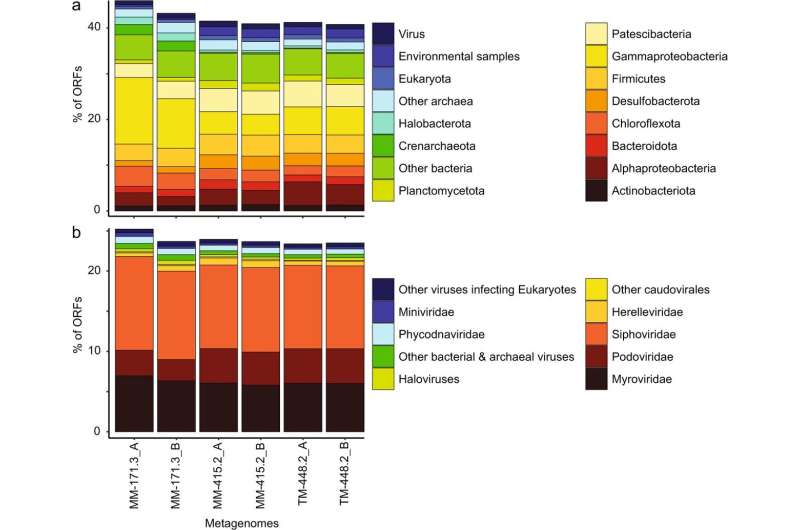New, active viruses found at depths of over 400 meters

Researchers who investigated water-filled cracks in the bedrock at a depth of 448 meters outside Oskarshamn in Sweden have found completely new viruses and vibrant bacterial and viral communities. The findings show that viruses are active in deep groundwater, and that their life cycles and growth rates are faster than previously thought.
Extreme conditions prevail in the bedrock at a depth of almost 500 meters underground. Still, there are both viruses and bacteria. This is shown by a study carried out by Karin Holmfeldt, Associate Professor of Ecology, together with colleagues from Linnaeus University and from KTH Royal Institute of Technology, Uppsala University, Swedish University of Agricultural Sciences, Germany and the U.S..
"Through large-scale sequencing, we have found completely new viruses that infect many different types of bacteria. It was particularly interesting to discover viruses that infect bacteria of the newly discovered group of Patescibacteria. And the viruses and bacteria are active. Because when the viruses kill their host bacteria, they release carbon and nutrients, which means that other bacteria can grow," says Holmfeldt.
The investigations have been carried out at the underground Äspö laboratory north of Oskarshamn in southeast Sweden. The researchers have studied the virus community in three water-filled cracks in the bedrock at 171, 415 and 448 meters below sea level.
"There are some virus groups that were found in all three groundwater depths. We thought that the viruses at 171 and 415 meters would be more similar to each other, as the chemical structure of the water there was similar despite the difference in depth. Instead, it turned out that 415 shared its entire virus community with 448, which surprised us."
The study also shows that viruses in these environments can transmit genetic material between bacteria, which also includes properties that make bacteria resistant to antibiotics. This means that natural antibiotic resistance can spread even deep into the bedrock.
The study was published on 8 March 2021 in Communications Biology.
More information: Holmfeldt, K., Nilsson, E., Simone, D. et al. The Fennoscandian Shield deep terrestrial virosphere suggests slow motion 'boom and burst' cycles. Commun Biol 4, 307 (2021). DOI: doi.org/10.1038/s42003-021-01810-1
Journal information: Communications Biology
Provided by Linnaeus University



















